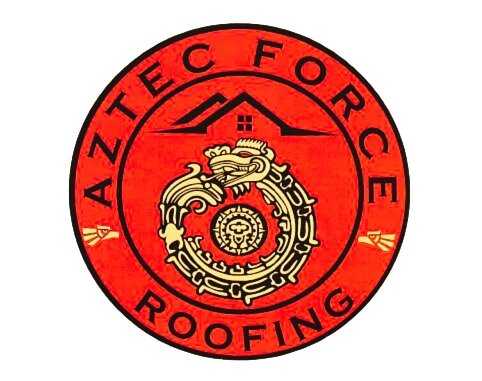Residential roof replacement is the process of completely removing an existing roof system and installing a new one, a critical step in protecting your home.
Aztec Force Roofing, LLC specializes in providing top-quality residential roof replacement services, including roofing installation services. We understand the importance of a sound roof and are here to guide you through the process.
This article will explain what residential roof replacement is, the factors to consider, the types of roofing materials available (including roofing shingle, roofing tile, roofing TPO, roofing modified, roofing metal, panel rubber), the differences between residential and commercial projects, the advantages of replacing your roof, and how Aztec Force Roofing, LLC can help you with your roofing needs (including roofing plumbing and landscaping restoration considerations). In essence, we’ll cover everything from roof installation to the long-term benefits of a new roof.
What is Residential Roof Replacement?
Residential roof replacement is a comprehensive process that goes beyond simply patching leaks.
It involves removing all existing roofing materials down to the roof deck (the wooden sheathing). Subsequently, professionals inspect the deck for damage and make any necessary repairs. Following this, they install new underlayment, flashing (including roofing plumbing integration), ventilation systems, and finally, the new roofing material itself.
This process ensures a watertight, long-lasting, and energy-efficient roof. Moreover, it is a significant investment that protects your home from the elements, improves energy efficiency, and enhances curb appeal.
Factors to Consider When Getting a Residential Roof Replacement
Before undertaking a residential roof replacement, several crucial factors warrant careful consideration:
Budget: Establishing a realistic budget is essential. Therefore, obtain multiple estimates from reputable roofing pro companies to compare costs.
Climate: Choose materials suitable for your local climate. For instance, areas with heavy snowfall require different roofing shingle types than those with intense sun.
Home Style: Select roofing materials that complement your home’s architectural style. Consequently, your house will look cohesive and aesthetically pleasing.
Roof Pitch and Complexity: The slope and complexity of your roof will influence material choices and installation costs.
Local Building Codes and Permits: Ensure the project complies with local building codes and obtain necessary permits.
Contractor Selection: Choose a licensed, insured, and experienced roofing installation services provider, like Aztec Force Roofing, LLC.
Types of Materials Used in Roof Replacement
Various materials are used in residential roof replacement, each with unique characteristics:
Asphalt Shingles: These are the most common and affordable option, available in various styles and colors.
Tile Roofing (Roofing Tile): Available in clay or concrete, tile offers durability and a classic look.
Metal Roofing (Roofing Metal): This durable and long-lasting option comes in various forms, including standing seam, metal shingles, and metal tiles.
TPO (Roofing TPO): A single-ply membrane roofing system often used on low-slope roofs.
Modified Bitumen (Roofing Modified): A rolled roofing material often used on flat or low-slope roofs.
Rubber Roofing (Panel Rubber): A durable synthetic rubber roofing material.
Furthermore, material selection should consider durability, aesthetics, and cost.
Differences Between Residential and Commercial Roof Replacements
While both residential and commercial roof replacements involve similar principles, there are key differences:
Scale and Complexity: Commercial roofs are typically larger and more complex than residential roofs.
Materials: Commercial roofs often utilize different materials, such as TPO, modified bitumen, or built-up roofing.
Building Codes: Commercial buildings often have stricter building code requirements.
Accessibility: Accessing a commercial roof can be more challenging, requiring specialized equipment.
Additionally, commercial projects often require specialized roofing, plumbing and drainage systems.
Advantages of Residential Roof Replacement
Replacing your roof offers numerous advantages:
Enhanced Protection: A new roof provides superior protection against the elements.
Increased Energy Efficiency: Modern roofing materials can improve insulation and reduce energy costs.
Improved Curb Appeal: A new roof can significantly enhance your home’s appearance.
Increased Home Value: A new roof can increase your home’s resale value.
Prevention of Costly Repairs: Replacing an aging roof can prevent more extensive and costly repairs down the line.
Consequently, it is a worthwhile investment.
How Aztec Force Roofing LLC Can Help
Aztec Force Roofing, LLC specializes in providing comprehensive residential roof replacement services.
Our experienced Roofing Pro team handles every aspect of the project, from initial inspection and material selection to professional installation and cleanup.
Furthermore, we can also address any roofing plumbing needs and coordinate landscaping restoration after the project is complete.
We serve both residential and commercial clients. We are committed to providing quality workmanship as well as excellent customer service.
Conclusion
Residential roof replacement is a vital investment in your home’s protection and value. By understanding the process, considering the key factors, and choosing a reputable contractor like Aztec Force Roofing, LLC, you can ensure a successful and long-lasting roof.
Frequently Asked Questions
How do I know if I need a new roof?
Common signs include missing or damaged shingles, leaks, granules in gutters, and an aging roof (over 20-25 years old for asphalt shingles).
How long does a roof replacement take?
Typically, most residential roof replacements take 1-3 days, depending on the size and complexity of the roof.
How much does a new roof cost?
The cost varies depending on the size of the roof, the materials used, and labor costs in your area.
Will my insurance cover roof replacement?
Insurance typically covers roof replacement if the damage is caused by a covered peril, such as wind or hail.
What is the best time of year to replace a roof?
Generally, spring and fall offer ideal weather conditions for roof replacement.
